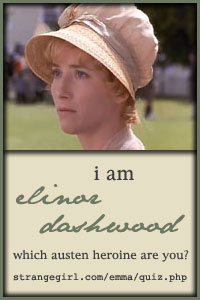Home! That was what they meant, those caressing appeals, Those soft
touches wafted through the air, those invisible little hands pulling and
tugging, all one way.
At first, the story of four animal friends living along the banks of a tranquil English river existed only in the bedroom of Alistair Grahame. His father, Kenneth, a secretary for the Bank of England, created them as bedtime stories for his young son. After he retired from his job, Grahame decided to write these stories down and in 1908, The Wind in the Willows was published. It soon became a favorite of people all over the world, from President Theodore Roosevelt to future children's author A. A. Milne. And it remains one of my personal favorites to this day.
The Plot:
With the arrival of spring, Mole is tempted from his spring cleaning out into the world above his hole. He chances to meet Rat, who introduces Mole to his life along the riverbank. The two become fast friends and are soon spending their days on the river boating, fishing, picnicking, and exploring. Other friends soon appear on the scene as well. There is the reclusive, but kind hearted Badger who makes his home in the dark and dangerous Wild Wood. There is the cheerful Otter who is there one minute and gone the next. And there is the over the top, vain, and loveable Toad who lives in his ancestral home of Toad Hall. As life along the riverbank flows through the seasons, the friends have many adventures and ultimately learn the value of home and friendship.
My Review (Caution - Spoilers):
This book has been a favorite of mine for years. I first discovered the story by renting a video version from the library when I was very young and it has stayed with me ever since. It is one of the most beautiful, charming, and sensitive children's books that I have ever read.
In many ways, this is two books in one. One part of the book is the fast-paced, rollicking adventure told through Mr. Toad. He is the only character to take us beyond the peaceful world of the riverbank and into the wide world. It is non-stop action and Toad is constantly getting himself into big scrapes and then somehow manages to get out of them (usually by chance or the help of someone else, but Toad would have you believe that it was his own smarts). This aspect is balanced out with an emotional and almost spiritual story line told mostly through Rat and Mole's friendship. Except when their stories intersect with Toad's, it is a much more tranquil story line that portrays a full range of human emotion like fear, sadness, restlessness, longing, joy, and friendship. But Grahame also never lets us forget that his characters are animals, and they often display moments of instinct, sight, sound, and smell.
I think the most prominent aspect of the story, and strangely enough one that I never really noticed until this reading, is the importance of home. Each character has it's own sense of what home means. For Mole, it is his cozy, simple hole. For Badger, it is his vast and hidden home of tunnels. For Rat, it is hearing the river lap against his windowsill every night. And for Toad, it is his elegant and manicured Hall. It gives us the sense that home is defined by the individual and that no matter how much you enjoy spending time somewhere else, it is ultimately never the same as being in your own space. I think this idea resonates with adults more than children. We have to go out into the wide world every day, and nothing means as much to us as coming home at the end of it and finding things just the way we like it.
This book is one of literature's greatest treasures. No matter how old you are, you will love spending time Grahame's world with it's sense of wonder, peace, order, and nostalgia. It will continue to be one of my favorites for as long as I live, and one that I greatly anticipate sharing with my own children one day.
The Movie:
There have been lot's of film and television adaptations of this story. I am familiar with two of them. One is the 1983 stop-motion adaptation starring David Jason, Ian Carmichael, and Michael Horndern The other is the 1995 animated version starring Michel Palin, Alan Bennett, Rik Mayall, and Michael Gambon. Both of these films do a wonderful job with the story and are great for the whole family.



















